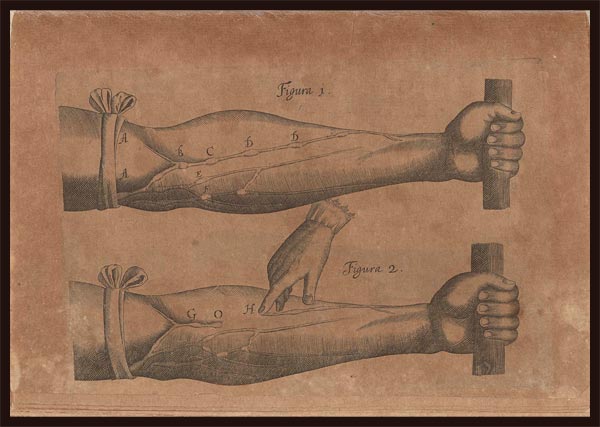The Anatomical Treatise on the Movement of the Heart and Blood in Animals is a modest book: a small quarto of only seventy-two pages. It contains, however, one of the most revolutionary texts of the history of medicine. Harvey proved that the movement of the blood is continuous and in one direction, and that it returns to the heart by a venous route, the heart working as a pump. Furthermore, regarding the pulmonary circulation, he explained that all of the blood passes through the lungs, is returned to the left side of the heart, and then passes through the general circulation to return to the right side of the heart.
William Harvey
To zoom in, hover over the image with your mouse
Exercitatio anatomica de motu cordis et sanguinis in animalibus Frankfurt: William Fitzer, 1628 The Le Roy Crummer Collection


